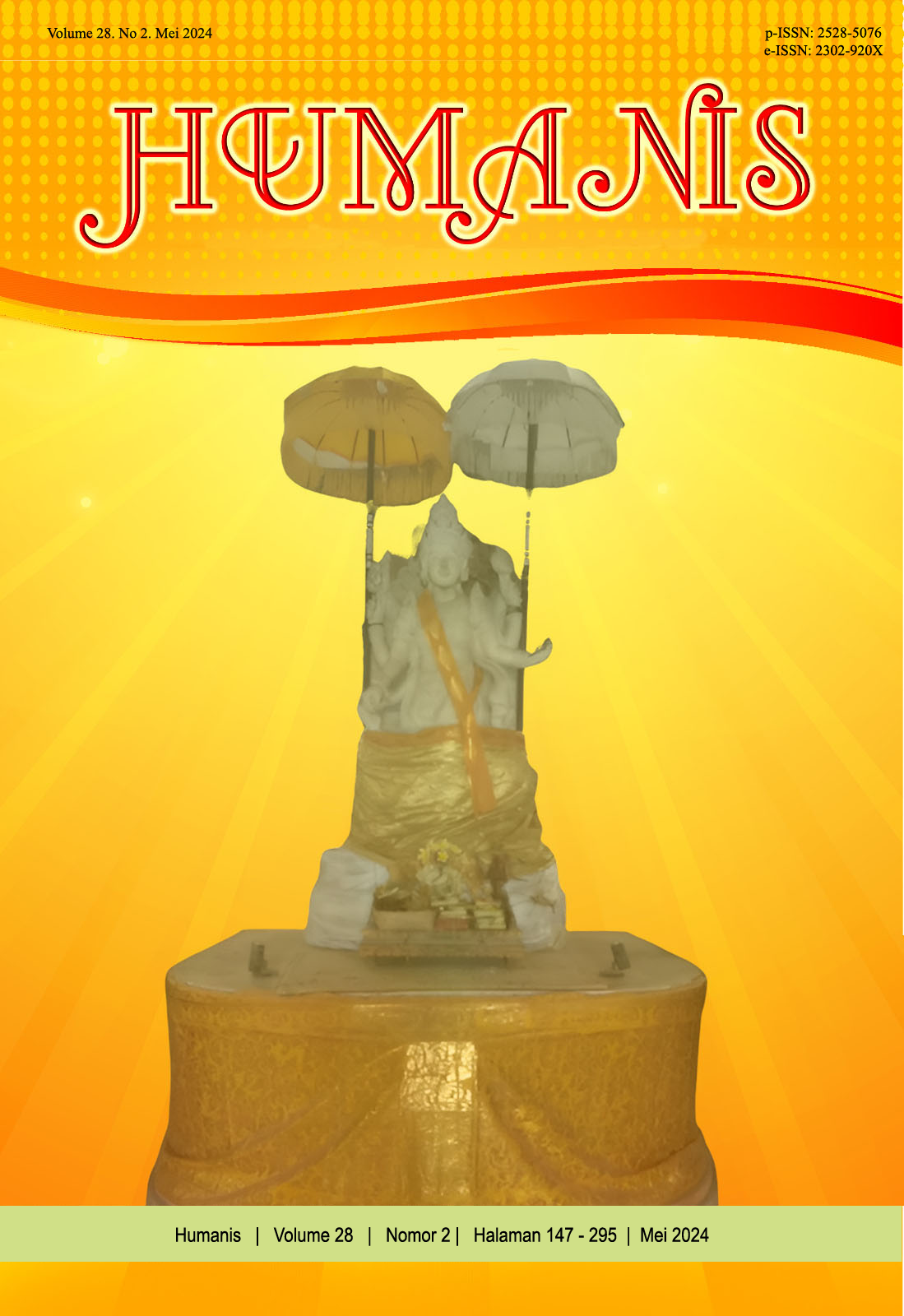Beyond the Stereotypes: Unveiling Signs in “Flip the Script” Video Champaign for Sustainable Development Goals
Abstract
This study employs semiotic analysis to examine the verbal and visual signs within the "Flip the Script" video campaign and explore their interplay in conveying the campaign's intended message. Additionally, the research categorizes the United Nations Sustainable Development Goals (SDGs) depicted in the campaign, drawing from Chandler's (2007) and Leech's (1981) theories The findings highlight the presence of connotative meanings that significantly enhance communication strategies. Through linguistic and visual exploration, the study analyzes how signs and metaphor-driven words resonate deeply with viewers. The process of categorizing SDGs bolsters the campaign's mission of advancing sustainable development, harnessing semiotics to foster nuanced comprehension and forge meaningful connections. The findings of the study shed light on how the campaign video effectively confronts stereotypes and disrupts ingrained societal biases by presenting diverse narratives. This contribution ignites inclusive dialogues and steers positive transformation, enhancing the understanding of the campaign's impact on societal perceptions and behaviors.
Downloads
References
Chandler, D. (2007). The Basics Semiotics. London and New York: Routledge.
Chandler, Daniel, Semiotic for Beginners, 2020, http://visual-memory.co.uk/daniel/Documents/S4B/, retrieved August 3, 2023.
Hargittai, E. (2010). Digital Na(t)ives? Variation in Internet Skills and Uses among Members of the “Net Generation.” Sociological Inquiry, 80(1), 92–113. doi:10.1111/j.1475682x.2009.00317.x
Hutchinson, J. (2019). Micro-platformization for digital activism on social media. Information, Communication & Society, 1–17. doi: 10.1080/1369118x.2019.1629612
Jernudd, B. H. (1997). Verbal and visual signs. Semiotica, 116(1-2), 1-19.
Juniartha, I. W., Putra, I. G. B. W. N., Indrawan, I. K. A. (2021). Maskulinitas Karakter Utama Wanita Pada Film” I Care A Lot”. Prosiding Seminar Nasional Linguistik Dan Sastra (SEMNALISA), 95-101.
Kotler, P., Roberto, N., & Lee, N. (2002). Social Marketing: Improving the Quality of Life. Sage Publications.
Kotler, P., & Andreasen, A. R. (2006). Strategic marketing for nonprofit organizations. Prentice Hall.
Lakoff, George (1993). ‘The contemporary theory of metaphor’ in Metaphor and thought, 2nd edn. A. Ortony (ed.), 202–251 Cambridge: Cambridge University Press.
Lakoff, George, and Mark Johnso (1999). Philosophy in the flesh: The embodied mind and its challenge to western thought. New York: Basic Books.
Leech, G. (1974). Semantics: The Study of Meaning, Penguin Books. London, p.9-19.
Leech, G. N. (1974). Semantics and the Language of Advertising.
McFarlane, D. A. (2014). A positive theory of stereotyping and stereotypes: is stereotyping useful? Journal of Studies in Social Sciences, 8(1). doi: https://infinitypress.info/index.php/jsss/article/view/554
Saussure, F. (1893). Course in General Linguistics. (P. Meisel, H. Saussy, Eds., & W. Baskin, Trans.) New York: Columbia University Press.
Saussure, F. (1991). Sign, System, and Arbitrariness. New York: New York: Cambridge University Press.
Suardani, N. K. A., Pratiwi, D. P. E., Juniartha, I. W. (2022). An Analysis of Verbal and Visual Signs Found in the Posters of Korean Pop Idol. LINGUISTIKA, 29 (1). doi: https://doi.org/10.24843/ling.2022.v29.i01.p01
uryani, N., & Suastini, N. (2023). Semiotic: Analysis of Verbal and Nonverbal Signs of Canggu Weekly Advertisement. Humanis, 27(2), 136-149. doi:10.24843/JH.2023.v27.i02.p03
Sustainable Development Goals (SDGs). https://www.undp.org/sustainable-development-goals retrieved August 20, 2023.
UN SDG Action Campaign (2022). (English) #FlipTheScript Campaign Video. Retrieved on 19th July 2023, from (https://youtu.be/iDM03BDJv4g)


















